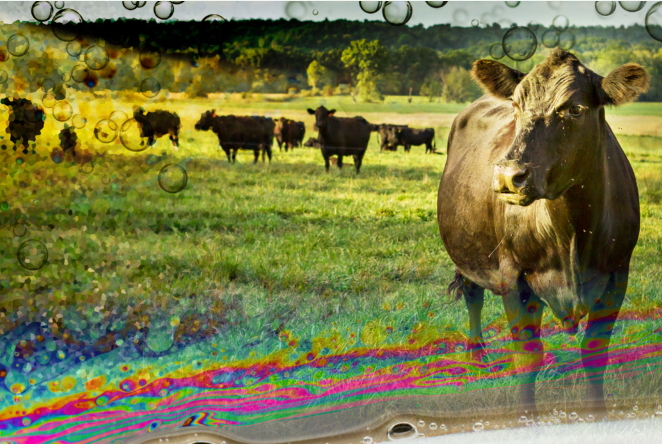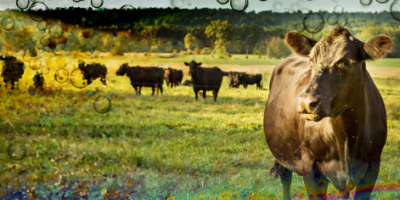
In this piece, Dr. Tim Benton reflects on the latest report by the FCRN: Grazed and confused?
Tim Benton is a Professor of Population Ecology and dean of strategic research initiatives at the University of Leeds. From 2011-16, he was the 'champion' of the UK’s Global Food Security programme, a multi-agency partnership of the UK’s public bodies with interest in the challenges around food. He is currently a Visiting Fellow at Chatham House.

In the great debates about the future of food, there are many things people agree on – at least conceptually – healthy diets are expensive, cheaper diets are often unhealthy, the food system trades off agricultural efficiency against systemic efficiency, and the food system externalises too much cost to air, water and environment more generally. In short, many agree that the food system is unsustainable in the long term. However, if there is one subject that people find emotive when thinking about the future of food, and where there is little consensus, it is about the role of livestock, and in particular, ruminants, in the future of food.
Ruminants are mammals that ferment vegetation in a multi-chambered stomach, continually chewing lumps of it (“cud”) to help bacteria break it down. Other mammals, e.g. pigs and horses, are “monogastric” which, if they ferment food, do so in their hind-gut, and less efficiently – pigs don’t graze, and horse-poo is poorly digested relative to cow pooh!
The reason that ruminants are a focus is because their efficient means of fermenting grass produces a lot of methane, which is a very potent greenhouse gas. The more beef and dairy we demand, the more they create climate change – in an era when all sectors are looking to “decarbonise”. Should we stop eating beef and dairy? If so, do we eat less, or switch to pigs and poultry (and alternative plant-based “milks”?). If we reduce ruminant consumption, what happens to pastureland (and its farmers?). Or do pasturelands store carbon and should we support grass-fed livestock and not grow arable-based feeds for chicken and pigs?
Garnett and colleagues try to make sense of this highly contested area in their new report, aptly titled “Grazed and confused?”. They do an excellent job at articulating and addressing the contested points, their principle conclusion is that there is “no right answer” other than our growing demand for meat is unsustainable.
Livestock are clearly domesticated wild animals, and in the past they, or their wilder forebears, played an immensely important role ecologically. Think of African savannahs and how they have been shaped by giraffes, antelope and buffalo. Following domestication, livestock played an important role in nutrient transfer (from pasture, or crop residues, back to the land). However, our increasingly industrialised agriculture circumvents this historical role. Their ability, therefore, to sequester carbon in soils is increasingly negligible, relative to their ability to emit carbon through digestion – which, in total, amounts to nearly 15% of all human-related emissions.
This report highlights the wickedness and complexity of the issue. The net emissions of livestock involve significant trade-offs between land conversion, feed or pasture growth (and the fertilisers used for that). They also involve trade-offs between livestock husbandry, concentration, and its impacts on land, water, air-quality and local biodiversity, as well as the livelihoods provided by farming and farming’s impact on nutrition and health. In some circumstances, the balance of trade-offs indicate that it makes more sense to encourage extensive livestock production, in others it doesn’t. What is certain is that it is only possible to balance the costs and benefits when all factors are weighed in the balance – and that means whilst the global need is clear (to eat less meat) how best to do it will likely vary from location to location. Neither eating only “pasture fed beef”, nor switching from beef to intensively grown “white meat” production fed on arable crops is “the” answer.
Even the argument that eating less meat, with that we eat coming from pasture-fed ruminants and monogastrics fed on waste and by products (or “co-products from a circular economy” in techno-jargon) is far from painless as a solution. This is because of social challenges – how would we reduce global livestock product consumption in the developed world of about 50%, and how would it affect people and livelihoods? – as well as environmental ones, with extensive pasture systems typically emitting more greenhouse gases.
This report has a number of strong conclusions.
That the role of ruminants in particular and animal products in general must be more limited than simplistic demand-projections suggest – if we are to have a sustainable production system without accelerating climate change.
It also highlights the complexity of land-use decision making, and the need to get far smarter about how we use land. Simply letting market forces dominate is likely to drive the system towards further externalising production costs, when they need internalising.
Finally, this report is an excellent one that addresses the costs and benefits in a systemic way. Our silo-ed way of breaking up problems (agriculture vs food, demand vs supply, agrifood vs health or environment, developed vs developing worlds) means the “big picture” is always fractured, and we concentrate on looking only at isolated pieces in the jigsaw. We need to get better at dealing with complexity, not wishing it away in terms of seeking simplistic answers.
This report is an important one for trying to grapple with the big picture. We might still be a little confused by the role of grazing animals in the food system, but it is becoming increasingly difficult to hide the fact that, when we look at it in the round, our increasing demand for livestock produce is a luxury we cannot afford to indulge.









Post a new comment »